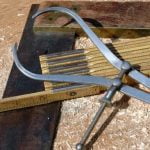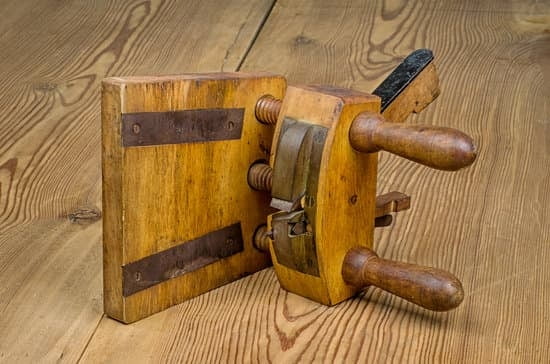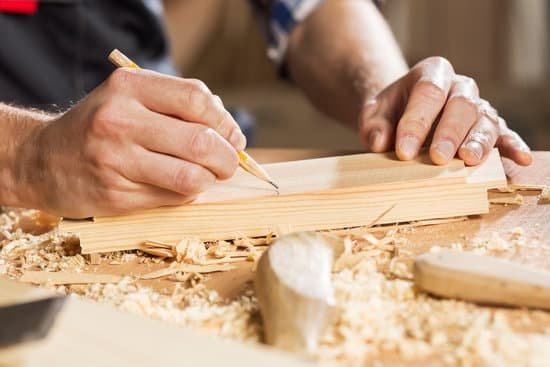Are you interested in learning how to make a chess set woodworking? Handcrafted chess sets are not only functional but also beautiful works of art that can be enjoyed for generations. In this article, we will explore the art of creating a handmade chess set from scratch, providing you with all the information and guidance you need to get started on your own woodworking project.
Woodworking a chess set is a labor of love that requires patience, precision, and creativity. Each piece must be carefully crafted and thoughtfully designed to ensure both aesthetic appeal and functionality. From selecting the right materials to adding the finishing touches, every step of the process contributes to the creation of a unique and personalized chess set that reflects the maker’s skill and artistry.
In the following sections, we will discuss everything you need to know about woodworking a chess set, including the materials needed, choosing the right wood for your project, essential tools, step-by-step carving guide, design tips and techniques, finishing and polishing methods, as well as tips for maintaining and caring for your handmade chess set.
Whether you are a seasoned woodworker or just starting out, this comprehensive guide will equip you with the knowledge and skills to create your very own one-of-a-kind chess set.
Materials Needed for Woodworking a Chess Set
When it comes to woodworking a chess set, there are several materials that you will need to gather before you can begin creating your own handcrafted set. The first and most obvious material you will need is wood. However, not just any type of wood will do. You will also need wood carving tools, sandpaper, and wood finish to complete the project.
The type of wood you choose for your chess set is crucial to its overall appearance and durability. Many craftsmen prefer to use hardwoods such as maple, walnut, or cherry for their chess sets due to their density and ability to hold intricate details when carving. Softwoods like pine are easier to work with but may not provide the same level of durability or detail.
In addition to the wood itself, you will need a variety of tools including chisels, gouges, and saws for cutting and shaping the pieces. Sandpaper in various grits will be necessary for smoothing out rough edges and achieving a polished finish.
Finally, a high-quality wood finish such as varnish or polyurethane will help protect the wooden pieces from wear and tear while enhancing the natural beauty of the grain. With these materials in hand, you can start your journey into creating a beautiful handcrafted chess set that you can cherish for years to come.
Choosing the Right Wood for Your Chess Set
When it comes to making a chess set through woodworking, the type of wood you choose will have a significant impact on the final result. Not only does the wood type affect the aesthetics of your chess set, but it also plays a role in the durability and longevity of the pieces. Here are some key factors to consider when choosing the right wood for your handmade chess set:
1. Density and Hardness: The density and hardness of the wood will determine how well it holds up to wear and tear. Hardwoods such as maple, cherry, walnut, and oak are popular choices for chess sets due to their durability.
2. Grain and Color: Consider the grain pattern and color of the wood as it will contribute to the overall appearance of your chess set. Some woods, like rosewood and padauk, have rich, distinctive colors that can add a unique touch to your pieces.
3. Workability: Different types of wood have different workability characteristics. Some woods are easier to carve and shape, while others may require more specialized tools and techniques. Be sure to choose a wood that is suitable for your skill level and available tools.
In addition to considering these factors, it’s important to select high-quality, well-seasoned lumber for your chess set project. Properly dried wood will be less prone to warping or cracking over time, ensuring that your handmade chess set lasts for years to come. By taking the time to carefully choose the right wood for your project, you can create a stunning and long-lasting chess set that showcases your woodworking skills.
Sourced:
Tools Required for Woodworking a Chess Set
Essential Woodworking Tools
When it comes to woodworking a chess set, having the right tools is crucial. Some of the essential tools you will need include a chisel set, wood carving knife, coping saw, dovetail saw, and a carving mallet. These tools will allow you to carve and shape the different chess pieces with precision and accuracy.
Sanding and Finishing Tools
In addition to the carving tools, you will also need sandpaper of varying grits for smoothing out the surfaces of the chess pieces. A fine-grit sandpaper will help you achieve a polished finish on your wooden chess set. You may also want to invest in a wood varnish or finish to protect and enhance the natural beauty of the wood.
Safety Gear
Woodworking can be dangerous if proper safety precautions are not taken. Make sure to have safety goggles, dust masks, and hearing protection on hand when working with power tools or carving sharp tools.
By having these essential woodworking tools at your disposal, you can ensure that your handmade chess set turns out beautifully crafted and durable. Whether you are a beginner or seasoned woodworker, having the right tools makes all the difference in creating a stunning wooden chess set that will be enjoyed for years to come.
Step-by-Step Guide to Carving the Chess Pieces
Carving your own chess pieces can be a rewarding and enjoyable woodworking project. Whether you’re a novice or an experienced woodworker, creating your own handmade chess pieces adds a personal touch to the game. In this section, we will provide a step-by-step guide to help you carve your own unique set of chess pieces.
Before you start carving, it’s important to have a clear plan and design for your chess pieces. You can find inspiration from traditional designs or create your own unique style. Consider sketching out the shapes and sizes of each piece before you begin carving to ensure consistency and accuracy.
Once you have your design in mind, it’s time to choose the right wood for your chess pieces. Hardwoods such as maple, walnut, and cherry are popular choices for carving due to their durability and attractive grain patterns. Select a high-quality wood that is free from knots and imperfections to ensure a professional finish for your chess set.
As you begin the carving process, start with the larger pieces such as the king and queen before moving on to the smaller pawns. Use sharp carving tools such as chisels, gouges, and carving knives to carefully remove material from the wood in small increments. Take your time with each piece, paying close attention to detail and refining the shape until you achieve the desired result.
When carving intricate details such as facial features or decorative elements, consider using finer carving tools or specialized attachments for added precision. As you work through each piece, remember that patience and practice are key when it comes to mastering the art of carving chess pieces.
Creating your own hand-carved chess set is a labor of love that requires dedication and skill. With careful planning, attention to detail, and a passion for woodworking, you can produce a one-of-a-kind chess set that reflects your creativity and craftsmanship.
Design Tips and Techniques for a Unique Chess Set
Planning Your Design
Before you begin woodworking your chess set, it’s important to plan out the design. Consider the size of the board, the height and width of the pieces, and any special features you want to incorporate. Think about whether you want your set to have a traditional look or if you’re interested in creating something more modern and abstract. Sketching out your ideas can help bring your vision to life.
Adding Personal Touches
One of the benefits of handcrafted woodworking is the ability to add personal touches to your chess set. This could include carving initials into the base of each piece, adding unique details like intricate patterns or designs, or using different types of wood to create contrast. Adding these personal touches can make your chess set truly one-of-a-kind and can also serve as a signature style that sets your work apart from others.
Exploring Different Styles
When designing your chess set, consider exploring different styles and themes. You might be inspired by historical periods such as medieval or ancient civilizations, or by natural elements like animals or plants. You could also take inspiration from other cultures and incorporate unique shapes or symbols into your design. By exploring different styles, you can create a chess set that reflects your creativity and individuality.
By following these design tips and techniques, you can create a unique and beautifully crafted wooden chess set that will showcase your woodworking skills while providing hours of enjoyment for players.
Finishing and Polishing Your Handmade Chess Set
Once you have completed carving and assembling your handmade chess set, the next important step is finishing and polishing. This step will not only give your chess pieces a professional look but also protect the wood from damage and wear. The process involves several stages, including sanding, staining, and applying a protective finish.
The first step in finishing your chess set is sanding. Use fine-grit sandpaper to smooth out any rough edges or surfaces on the chess pieces. This will also prepare the wood for staining by creating a clean and even surface for the stain to adhere to. After sanding, wipe down the pieces with a clean cloth to remove any dust or debris.
Choosing the right stain for your chess set is crucial in achieving the desired color and finish. There are various types of wood stains available, such as oil-based, water-based, and gel stains.
Test the stain on a small, inconspicuous area of one of the chess pieces to ensure it produces the color you want before applying it to all the pieces. Once you have applied the stain evenly across all pieces, allow them to dry completely before moving on to the next step.
| Chess Set Finishing Steps | Description |
|---|---|
| Sanding | Smoothing out rough edges and preparing for staining |
| Staining | Choosing and applying the right stain for desired color and finish |
| Applying Finish | Protecting the wood with a clear finish or sealant |
Tips for Maintaining and Caring for Your Wooden Chess Set
Once you have completed the intricate and time-consuming process of woodworking a chess set, it is important to ensure that it remains in good condition for years to come. Proper maintenance and care are essential to preserve the beauty and functionality of your handcrafted wooden chess set. Here are some tips for maintaining and caring for your wooden chess set:
- Store your chess set in a cool, dry place away from direct sunlight to prevent warping or fading of the wood.
- Regularly clean the chess pieces with a soft, dry cloth to remove dust and dirt buildup. Avoid using harsh chemical cleaners that can damage the wood.
- Inspect the chess board and pieces for any signs of damage or wear, such as loose joints or cracks. Repair any issues promptly to prevent further deterioration.
Additionally, proper care techniques can help maintain the luster and quality of your wooden chess set for generations to come.
- Apply a thin layer of beeswax or wood polish to the chess pieces and board periodically to nourish and protect the wood from drying out or becoming brittle.
- Avoid exposing the chess set to extreme temperature or humidity fluctuations, as this can cause the wood to expand, contract, or become damaged over time.
- If your wooden chess set is frequently used, consider investing in a protective case or storage box to keep it safe when not in use.
By following these maintenance and care tips, you can ensure that your woodworking masterpiece continues to be a source of enjoyment for many years, preserving its beauty and craftsmanship for future generations.
Conclusion
In conclusion, creating your own handcrafted chess set through woodworking can be a rewarding and fulfilling experience. By following the step-by-step guide and utilizing the right materials and tools, you can bring to life a unique and personalized chess set that reflects your creativity and craftsmanship. From selecting the perfect wood to carving each individual piece, this process allows you to pour your passion into every detail, resulting in a one-of-a-kind creation.
Not only does woodworking a chess set provide an opportunity for artistic expression, but it also contributes to the preservation of traditional craftsmanship. By honing your woodworking skills and learning how to make a chess set from scratch, you are taking part in a time-honored practice that has been passed down through generations. This hands-on approach not only enhances your woodworking abilities but also allows you to appreciate the intricacies of this ancient game.
Once your handmade chess set is complete, it’s essential to care for it properly to ensure its longevity. Regular maintenance and polishing will help keep the wood in optimal condition so that you can continue enjoying your creation for years to come.
Whether it’s for personal use or as a thoughtful gift for someone special, the satisfaction of knowing that you crafted a beautiful and functional chess set with your own hands is truly invaluable. So, if you’ve ever wondered how to make a chess set woodworking is not just about creating pieces; it’s about embarking on an enriching journey through craftsmanship and creativity.
So why not take up the challenge of making your very own chess set? With dedication and patience, you too can be on your way to mastering the art of creating timeless wooden treasures.
Frequently Asked Questions
What Is the Best Wood for a Chess Board?
The best wood for a chess board is typically a durable and fine-grained wood such as maple, mahogany, or walnut. These woods provide a smooth surface for the chess pieces to move on and also offer an attractive finish.
How Are Wooden Chess Sets Made?
Wooden chess sets are made using a variety of woodworking techniques. The process usually begins with selecting the type of wood to be used and then cutting and shaping the pieces accordingly.
Skilled craftsmen then carefully carve and sand each piece to create the intricate details of the chess set. Finally, the pieces are often finished with staining or varnishing to enhance their appearance.
What Wood Is Best for Carving Chess Pieces?
When it comes to carving chess pieces, boxwood is often considered one of the best woods due to its fine texture and ability to retain intricate details. Other popular woods for carving chess pieces include ebony, rosewood, and padauk, which all offer unique colors and grains that can add character to each individual piece.
Ultimately, the choice of wood will depend on the desired look and feel of the final set of chess pieces.

Hi everyone! I’m a woodworker and blogger, and this is my woodworking blog. In my blog, I share tips and tricks for woodworkers of all skill levels, as well as project ideas that you can try yourself.





